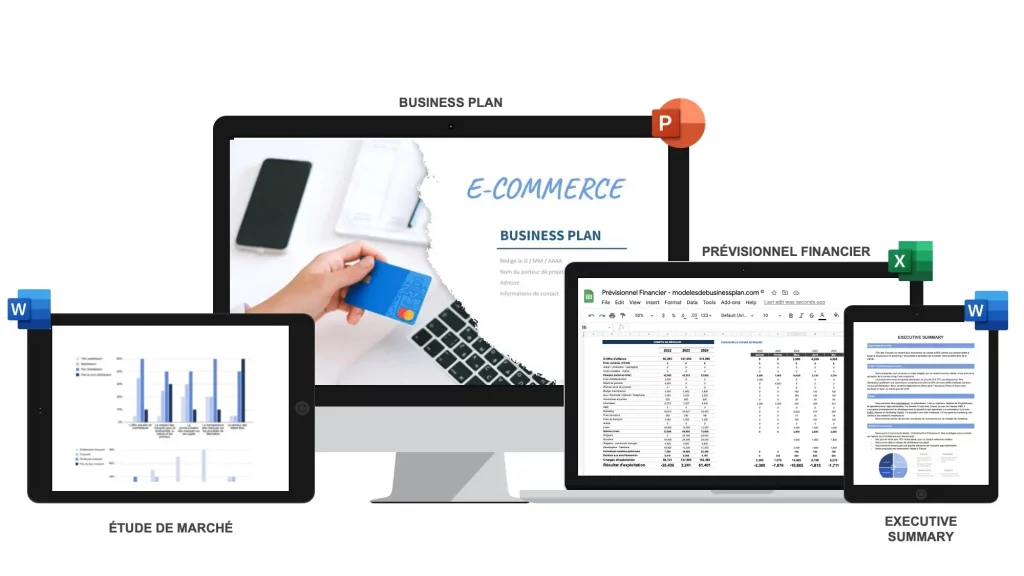
- Introduction
- Influence on online consumption
- Impact on traditional commerce
- The different networks and digital channels
- An exceptional user experience
- The impact on consumer behavior
- Web marketing and classic communication
Find the best deals at unbeatable prices!
Discover a selection of quality products at great prices. Simplify your shopping and save with us. 💰✨ #LessCostButBetter 🏆
It’s cheaper and better, so why pay high prices elsewhere? take advantage
To place an order on IvoireAchat, it’s better to create an account. However, this is not compulsory.
IvoireAchat is a reliable and trustworthy platform, as demonstrated by the 20 million users who visit it every month. You can order online without risk.
It’s easy to create a shop on IvoireAchat. Create a IvoireAchat account (if you don’t already have one), tick the become a seller box, define the location and currency of your shop, choose a shop name, create a listing, define a payment method (how you want to be paid) and finally define a billing method. Our IvoireAchat Advisors will help you at every step and fully assist you in taking your business online.
Joining and starting a shop on IvoireAchat is free. There are only relatively small, fixed basic sales fees.It costs nothing to publish an advert on the marketplace. An ad lasts until the item is sold. Once an item is sold, the only transaction fee is applied to the sale price (excluding shipping costs). If you accept payment by credit card or PayPal, you will receive your payment in your account.
Introduction

Since the 2000s and the expansion of the Internet, consumer habits in France and around the world have changed radically, with the growth of e-commerce and the multiplication of connected retailers and merchants. Traditional stores are tending to disappear, giving way to virtual stores, otherwise known as e-commerce stores. Computer, mobile, tablet…
Sales channels are multiplying, and commerce is becoming a part of everyday life for French people and consumers, a commercial activity with no time or place limits. Every day, hundreds of online stores are created. Their creation is open to all, but many underestimate the difficulty of running an online store. Competition is often tough, margins are often low, the market is often saturated and marketing efforts must be intensified…
To earn a satisfactory income, you need to sell a high volume of products. If you want to boost your online store and hope to succeed in this sector, it’s best to analyze the impact of e-commerce on web users, and find solutions or services that are made to last. Follow the guide!
“When you think ‘I know’ and ‘it is,’ you have the illusion of knowing, the illusion of certainty, and then you’re mindless” Jelly Cristiana
How does e-commerce influence online consumption?
The impact of Internet use on traditional commerce
What is e-commerce? Also known as electronic commerce, this activity encompasses all commercial transactions carried out remotely via electronic devices. More specifically, e-commerce covers all purchases made from online stores via connected devices (m-commerce, computers, tablets, connected TVs, etc.). In recent years, with the development of both the Internet and new technologies, e-commerce has grown in importance and has found its place alongside traditional physical stores. The challenges facing retailers and brands in the e-commerce sector are real, and are becoming ever more complex, as these e-commerce statistics demonstrate.
The advantages of e-commerce for Internet users are numerous: no need to travel, no need to worry about the store’s opening hours, which never close, and direct home delivery of products. Internet commerce means you can buy anything, anywhere, anytime. There are a few minor drawbacks to e-commerce, but there’s a reason why it’s so popular: e-commerce means fast, easy shopping. Today, physical commerce is obliged to sell online in order to survive and grow: an opportunity to be seized by retailers in a classic retail environment that is diversifying.
Marketplaces, social networks: e-commerce through multiple channels
Adapting to virtual demand doesn’t just mean offering a high-quality online store. Web sales are making the most of technology to serve consumers and, above all, to encourage them to buy, thanks in particular to online marketing and technological solutions. Websites are being transformed into mobile applications and social networks, brands are taking root on the web, and online stores are becoming more visible as they reach out directly to consumers. The same is true of “web specials”, for example, a trend in online stores, enabling them to have both an impact and a presence with customers – something only possible on this scale in e-commerce.
User experience at the heart of e-commerce success
In addition to having all the features of an accessible business, online stores must also take on board the elements of physical commerce that make life easier for customers, elements that are indispensable in e-commerce: promotions, a real attraction for consumers (and e-tailers have understood this well by proposing promotional offers valid exclusively on the internet), but also delivery, exchange and returns policies, etc. As the consumer no longer travels, the online customer experience must be just as attractive, if not more so. Free delivery and/or returns, for example, are a decisive criterion when buying from an e-commerce site, and many Internet users ultimately give up on their product if delivery or returns don’t meet their expectations.
What is the impact on consumer behavior?
Customer reviews : A conversion (economic) challenge
Whether or not they’re satisfied with the products or the online store (in terms of product availability, live help or ease of use of the interface, for example), consumers don’t hesitate to speak up and give their opinion on their experience. And e-commerce is well aware of this! As a result, most online retailers now provide a space for consumers to comment and give their opinion. Some even offer the option of giving ratings (on the conformity of an item with its online description, or on delivery times, for example). Sharing functions on social networks are also very often present. These are all tools that users are looking for, and that will help other members of the community to make their pre-purchase choices. This information is a strength for e-commerce companies: this strategy enhances customer value and transparency, and enables the company to improve in the event of a negative experience.
Loyal customers close to e-commerce companies
Even if their habits change and evolve, consumers remain loyal. They frequent the e-commerce sites of companies they already know in physical form. This relationship of trust is extended through the loyalty programs offered by online stores: in the form of points to be accumulated, gifts or vouchers, it’s a win-win relationship for the consumer and the online sales company. What’s more, customers often want to stay close to their online business and keep up to date with the latest news, via social networks in particular, but also by subscribing to newsletters.
Users who buy more items online
These loyal customers are also more inclined to try out new products and consume. By keeping abreast of the latest e-commerce news and receiving special offers, consumers are more likely to buy products as soon as they are released (which they can find out about in advance via newsletters, for example), to pre-order them, or to use their promotional codes or discount vouchers. Customers who consume more thanks to purchasing levers just a click away.
Webmarketing and traditional communications: what’s at stake in e-commerce?
For their part, e-commerce platforms also seek to attract this community of consumers. By featuring customer testimonials, for example, they provide a real incentive to leave comments and opinions, as well as serving as a showcase for the website. E-commerce blogs are another way of bringing consumers together around content that, behind more general topics, nevertheless seeks to promote e-commerce products. But everything is done to gently encourage the customer to stay on the site and buy.
Simplicity of use for e-commerce sites
Websites need to be simple to use, fast and practical. Indeed, UX design has a huge impact on the user, who must be able to navigate on an ergonomic site, responsive on mobile, and easily find the different items he’s looking for. Among other things. The same applies to checkout: in addition to the fact that the payment methods offered must be secure, users expect to be able to pay quickly, easily and as they wish (by credit card, with Paypal, etc.). The Internet is synonymous with speed, and this also applies to online purchases. In just a few clicks, the Internet user must be able to order his product, fill in his payment details and validate his purchase to receive his parcel as quickly as possible.
The impact of e-commerce on consumer behavior
Transposing a business into an e-commerce site also means transposing its image. And this has a strong impact on the customer. All the more so since, with e-commerce, the image of a brand or chain is relayed on a large scale and to the four corners of the world. This is a major challenge for online retailers, and one that should not be overlooked. Mobile is at the heart of habits: customers are now accustomed to searching for information on their mobile before placing an order with retailers. Take care of your image and that of your company, and win over millions of Internet users!
Loyalty: keeping in touch with users
One of the most effective ways for an e-commerce site to control its image is to stay in touch with its customers. This can be done in a number of ways: newsletters to keep customers up to date with the latest business news, special offers and promotional codes that not only attract customers and encourage them to buy, but also enhance the image of a brand or chain, which is then seen as caring for its customers. The same is true of the loyalty programs offered by many online retailers. Social networks are also very practical tools for your e-commerce strategy, enabling you to both inform and keep in touch with consumers, on a large scale and with ease.
Environment: renewing your image to meet customer needs
The Internet also offers e-tailers the opportunity to modify their image, by diversifying or renewing it for example, to better match the lifestyles of their target consumers. And the impact is real! The environmental aspect of an e-business (the use of less polluting packaging or more environmentally-friendly delivery methods, for example), if highlighted, triggers purchases among web users, who also say they are prepared to pay more for e-businesses that are committed in this way. This makes it all the easier for e-retailers to take the measure of these impacts and consumer expectations, and adapt their image to reap the full benefits.












